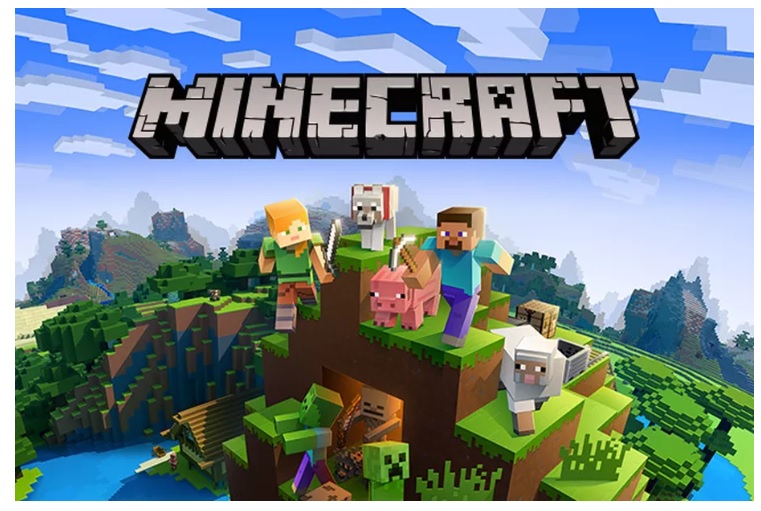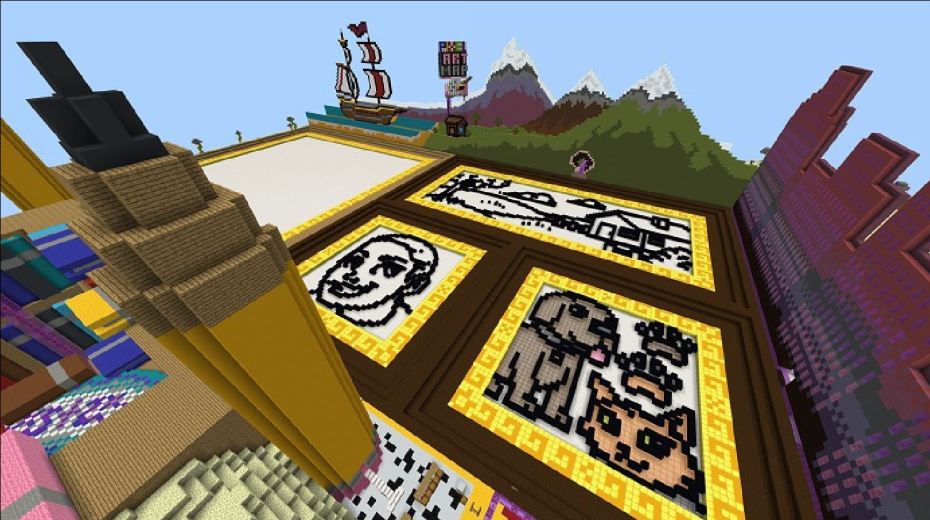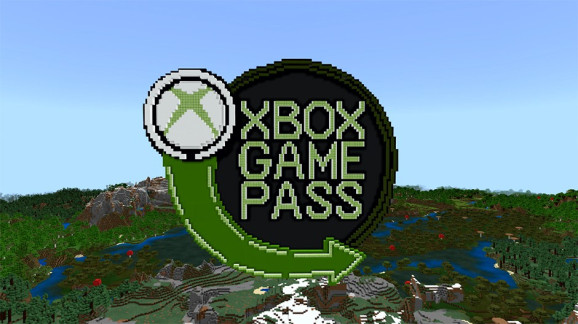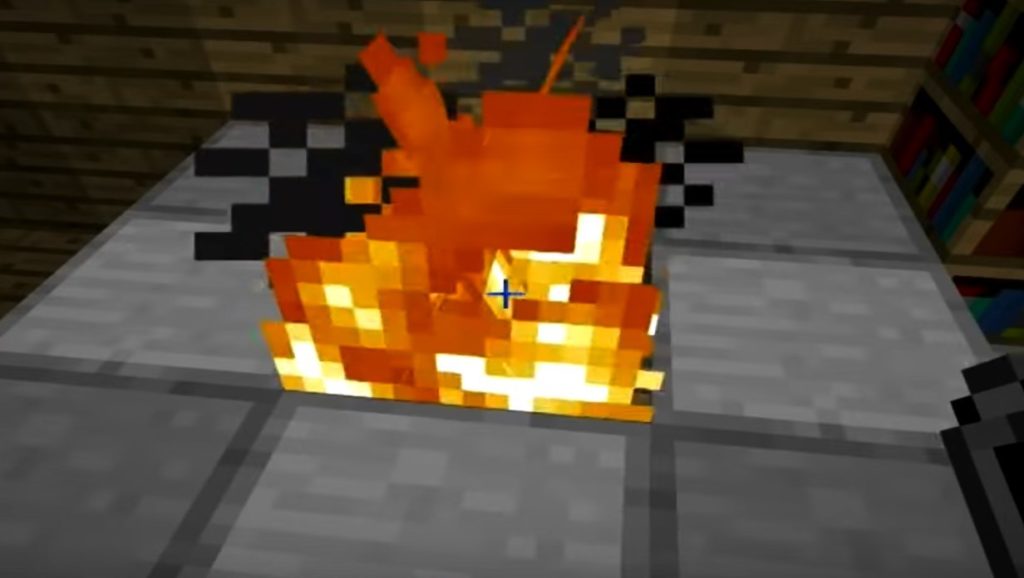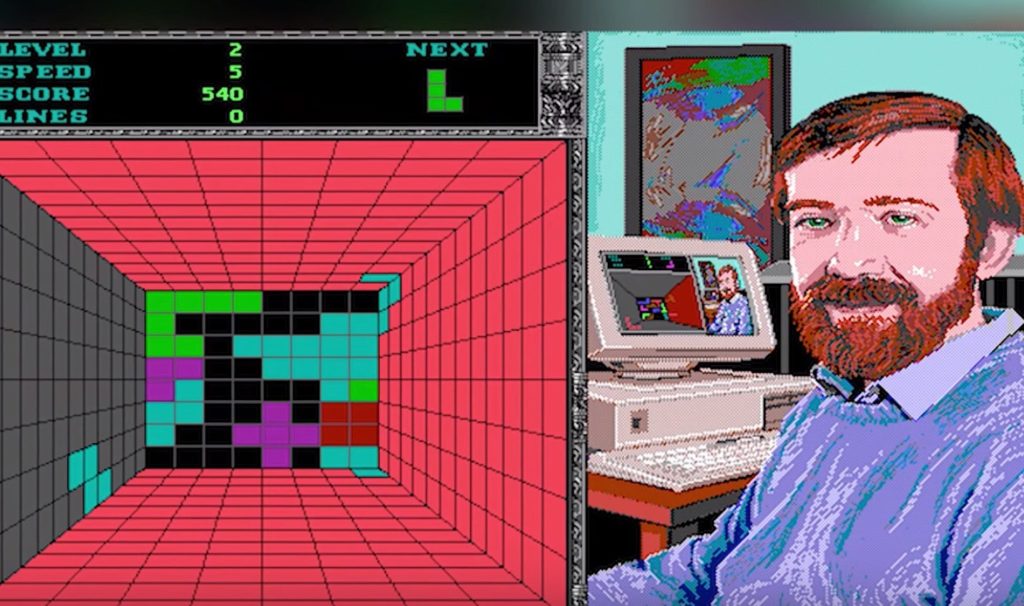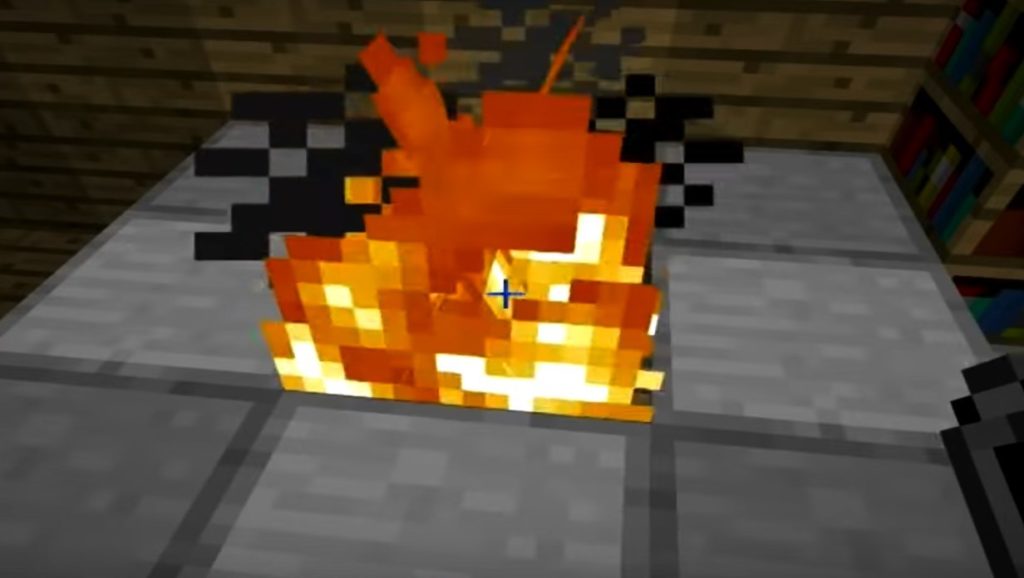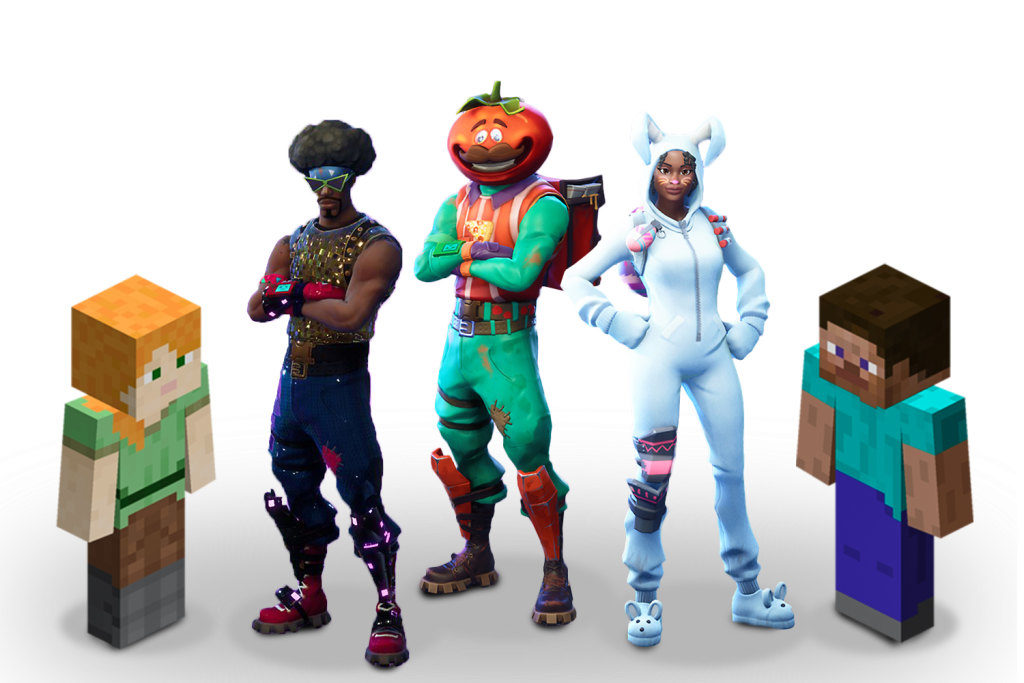Nvidia is bringing ray tracing to old GPUs that can’t ray trace worth a damn
How do you convince gamers that they’re getting their money’s worth from a $500+ graphics card? Nvidia’s latest technique is pretty smart — it’s taking real-time ray tracing, an eye-popping if barely adopted feature previously exclusive to its pricey new RTX-series graphics cards, and bringing it to a whole bunch of older Nvidia GTX-series GPUs that can’t ray trace to save their lives.
I’m partly joking. It’s pretty cool that I’ll soon be able to try out some “basic” DirectX Raytracing with my nearly three-year-old Nvidia GeForce GTX 1080 GPU! Here are the other graphics cards and chips that should be able to take advantage with a driver update this April:
:no_upscale()/cdn.vox-cdn.com/uploads/chorus_asset/file/15970946/geforce_rtx_gtx_dxr_supported_gpus_march_2019.png)
But seriously: Nvidia’s blog post seems explicitly designed to show that only the most expensive RTX-series GPUs can remotely approach 60fps framerates in modern games with ray tracing enabled.
Just look at the company’s comparisons charts for a few popular games with ray tracing enabled — and note that the “best case scenario” on the right requires DLSS, another feature that’s still exclusive to the pricier RTX series GPUs. GRID VIEW
/cdn.vox-cdn.com/uploads/chorus_asset/file/15970950/geforce_rtx_gtx_dxr_battlefield_v_performance.png)
The GTX 1080 Ti is among the most powerful of the last-gen cards — and it’s struggling even with a Core i9 processor to help it shoulder the load.
Nvidia chalks up the differences not to exclusive features, mind you, but the actual design of these chips. The RTX-series GPUs simply have cores that the GTX ones don’t, including RT cores designed for ray tracing and Tensor cores for machine learning that help enable DLSS.
But I don’t think that’ll keep Nvidia rival AMD from making fun of this move, though. AMD said last November that it wouldn’t implement DirectX Raytracing (the version that Nvidia is now enabling here) until it could make ray tracing a standard feature across its product line. Those words felt defensive then, but they make a lot more sense now.
Honestly, we’re pretty bullish on ray tracing long-term… but with some of the first promised games just barely getting support months after the graphics cards debuted, it’s very early days for the technology.
Microsoft is bringing Minecraft to Xbox Game Pass
Microsoft is bringing its popular Minecraft title to Xbox Game Pass next month. The software maker is releasing Minecraft as part of the monthly Xbox Game Pass subscription on April 4th, adding to the more than 100 games that Xbox players can access. While many Xbox players probably already own a copy of Minecraft, its addition to the Xbox Game Pass subscription will still help Microsoft on its mission to convince Xbox owners to subscribe.
Microsoft has been aggressively pushing its Xbox Game Pass subscription in recent months, and the first month is just $1 instead of the regular $9.99. For the monthly charge, you can download and install more than 100 games, including Microsoft’s latest first-party games like Crackdown 3, Sea of Thieves, and Forza Horizon 4. Microsoft has committed to launching all of its own games on Xbox Game Pass at the same time as they hit stores, meaning Halo Infinite, the next Gears of War, and additional Forza titles will all come to Xbox Game Pass.
Alongside Xbox Game Pass, Microsoft is also developing its xCloud game-streaming serviceso it can offer its entire subscription on multiple devices. xCloud will work across PCs, Macs, and mobile devices like iOS and Android. Microsoft is now planning to run xCloud trials later this year.
Minecraft Marketplace December 2018’s top 10 creations: Exponential growth
December was the Minecraft Marketplace’s biggest month yet. Downloads skyrocketed to 10,872,443 on Windows 10, iOS and Android, Xbox One, and Nintendo Switch. December doubled the 4.57 million downloads from November, which in turn doubled October’s 2.26 million.
The exponential growth for the Minecraft Marketplace is due to a number of factors. The Minecraft Team is releasing more free promotional content. This includes items such as the Catastrophic Pandamonium world, which Marketplace creator GameMode One built in partnership with Microsoft.
Catastrophic Pandamonium is a free download that highlights the Minecraft’s updated cat and panda creatures. Of December’s 10.87 million downloads, Catastrophic Pandamonium represented more than 4 million of those.
In addition to the free content, the Minecraft Marketplace is benefiting from timing and improved features. December is one of the biggest times of the year for live-service games. People who get new smartphones, consoles, or PCs for the gift-giving holidays return to something like Minecraft or to try it for the first time. And with better search and promotional features, The Minecraft Team has turned its Marketplace into a major attraction.
Let’s get to the charts.
Top 10 most downloaded
- Catastrophic Pandamonium by Gamemode One: “Welcome to the Minecraft Preserve, a sanctuary for the mobs of Minecraft. Your dream job is about to become a nightmare when you realize the pandas are missing!”
- Winter Gifts Bundle by Minecraft: “Whether you were naughty or nice this year (hopefully nice!), this bundle is our holiday gift to you! Last winter, we gave away amazing skins, worlds and adventures from some of your favorite Marketplace community creators. And now you can download them all again in this bundle of Winter Wonders!”
- Minecraft Texture Update Beta by Minecraft: “The extraordinary Minecraft Texture Update has been on the Java Edition in beta for quite a while, and now it’s finally on Bedrock! We’re renovating the old textures of Minecraft and polishing them up for a new beginning. Don’t panic! This won’t completely overhaul the look of Minecraft — these new textures just give it a much-needed update!
- Inspiration Island by Minecraft: “Visit Inspiration Island, a floating theme park world filled with creative challenges. Whether you are new to Creative Mode or just need a little extra inspiration, a visit here sets you on the path to craft your own groundbreaking worlds.”
- Purple Parrot Party Place by Minecraft: “A celebration of all things purple parrot party and palace! Master the mechanics of fireworks, armor stands, jukeboxes, and banners. Traverse a jungle island to find a massive parrot temple.”
- Legacy Skin Pack by Minecraft: “Get cracking with these starter skins and old favorites brought over from Minecraft editions of yore.”
- Grid Runners by Noxcrew: “Take on Noxcrew’s Grid Runners: a mini-game map made up of classic Minecraft challenges where you can craft, mine and jump your way to victory. Compete against the clock for the fastest times and team up with all of your friends to find out who is the ultimate Minecraft champion! This is a free map, created exclusively for Minecon Earth 2018.”
- ABSTRACTION: Minecon Earth by Jigarbov Productions: “Featuring the logos that were just begging to be played on, MINECON EARTH has floating landmasses with a surprising amount of hidden secrets and challenges.”
- Luxury Life by PixelHeads: “Luxury Life is a world where you role-play life as a billionaire. Cruise the streets in a sports car or any of the 10 other vehicles, explore luxurious mansions and decorate with furniture!”
- Aquatic Life by Cyclone Designs: “Get ready for a realistic aquarium experience with Aquatic Life! Dive into large tanks and swim with whale sharks! Discover dangerous shark species and hop on a boat and feed the Piranhas!”
Top 10 highest grossing
- Luxury Life by PixelHeads: “Luxury Life is a world where you role-play life as a billionaire. Cruise the streets in a sports car or any of the 10 other vehicles, explore luxurious mansions and decorate with furniture!”
- The Nightmare Before Christmas by Minecraft: “A nightmare? Before Christmas? Enjoy this themed pack by Minecraft.”
- City Mash-Up by Everbloom Studios: “With over 1,000 hand-detailed rooms, there are stories, secrets, and mini-games around every corner. Build with the city’s full texture pack in your own worlds or take on any role you can imagine!”
- Aquatic Life by Cyclone Designs: “Get ready for a realistic aquarium experience with Aquatic Life! Dive into large tanks and swim with whale sharks! Discover dangerous shark species and hop on a boat and feed the Piranhas!”
- CampCraft by Blockworks: “A vast wilderness awaits you and your friends in CampCraft. Discover forest animals, ride camper vans, toast marshmallows, sit around the campfire and set up your own camp!”
- City Life by PixelHeads: “Cruise through the big city in City Life! Chase down a bandit in your police car, save the day as a firefighter or take your dog for a walk.”
- Spooky Pizza Place by InPvP: “Do you dare to enter? Try to survive all of the waves with five custom monsters. Includes pizzeria and surrounding buildings.”
- Immersion: Chicago by Shapescape: “Immerse yourself in Chicago, the windy city. Visit the river with your friends, race through the streets and roleplay your daily life.”
- Super Cute Texture Pack by Minecraft: “The Super Cute Texture Pack lets you create a cheerful world full of the cutest and cuddliest mobs! Bouncing bunnies, ultra-adorable unicorns, brilliant bumblebees and, er, burgers? Yes, burgers! This texture pack comes with 15 skins.”
- Millionaire Mansions by Noxcrew: “Explore a town filled with beautiful mansions, sports cars, and a new toolset to help you design your dream house. Noxcrew’s Creative Toolbox is perfect for roleplay or building with your friends.”
Minecraft Marketplace January 2019’s 10 most downloaded creations
After a huge December, the Minecraft Marketplace quieted down in January. But a slow month for the in-game store is now 4.56 million downloads. That’s down from 10.8 million in December, but it’s flat compared to November’s 4.57 million.
The Minecraft Team and its community didn’t have too many new releases for January. Instead, people were showing up to download previously released free content. That includes the beta for the upcoming texture update and the Winter Gifts Bundle.
Let’s check out the charts for the most-downloaded and highest-grossing Minecraft Marketplace creations:
Top 10 most downloaded
- Minecraft Texture Update Beta by Minecraft: “The extraordinary Minecraft Texture Update has been on the Java Edition in beta for quite a while and now it’s finally on Bedrock! We’re renovating the old textures of Minecraft and polishing them up for a new beginning. Don’t panic! This won’t completely overhaul the look of Minecraft — these new textures just give it a much-needed update!”
- Winter Gifts Bundle by Minecraft: “Whether you were naughty or nice this year (hopefully nice!) this bundle is our holiday gift to you! Last Winter, we gave away amazing skins, worlds and adventures from some of your favorite Marketplace community creators. And now you can download them all again in this bundle of Winter Wonders!”
- Catastrophic Pandamonium by Gamemode One: “Welcome to the Minecraft Preserve, a sanctuarky for the mobs of Minecraft. Your dream job is about to become a nightmare when you realize — the Pandas are missing!”
- Purple Parrot Party Place by Minecraft: “A celebration of all things purple parrot party and palace! Master the mechanics of fireworks, armor stands, jukeboxes, and banners. Traverse a jungle island to find a massive parrot temple.”
- Legacy Skin Pack by Minecraft: “Get cracking with these starter skins and old favorites brought over from Minecraft editions of yore.”
- ABSTRACTION: Minecon Earth by Jigarbov Productions: “Featuring the logos that were just begging to be played on, MineCon Earth has floating landmasses with a surprising amount of hidden secrets and challenges.”
- Grid Runners by Noxcrew: “Take on Noxcrew’s Grid Runners: a mini-game map made up of classic Minecraft challenges where you can craft, mine and jump your way to victory. Compete against the clock for the fastest times and team up with all of your friends to find out who is the ultimate Minecraft champion! This is a free map, created exclusively for Minecon Earth 2018.”
- Inspiration Island by Minecraft: “Visit Inspiration Island, a floating theme park world filled with creative challenges. Whether you are new to Creative Mode or just need a little extra inspiration, a visit here sets you on the path to craft your own groundbreaking worlds.”
- Luxury Life by PixelHeads: “Luxury Life is a world where you role-play life as a billionaire. Cruise the streets in a sports car or any of the 10 other vehicles, explore luxurious mansions and decorate with furniture!”
- Aquatic Life by Cyclone Designs: “Get ready for a realistic aquarium experience with Aquatic Life! Dive into large tanks and swim with whale sharks! Discover dangerous shark species and hop on a boat and feed the Piranhas!”
Top 10 highest grossing
- Luxury Life by PixelHeads: “Luxury Life is a world where you role-play life as a billionaire. Cruise the streets in a sports car or any of the 10 other vehicles, explore luxurious mansions and decorate with furniture!”
- City Mash-Up by Everbloom Studios: “With over 1,000 hand-detailed rooms, there are stories, secrets, and mini-games around every corner. Build with the city’s full texture pack in your own worlds or take on any role you can imagine!”
- Aquatic Life by Cyclone Designs: “Get ready for a realistic aquarium experience with Aquatic Life! Dive into large tanks and swim with whale sharks! Discover dangerous shark species and hop on a boat and feed the Piranhas!”
- City Life by PixelHeads: “Cruise through the big city in City Life! Chase down a bandit in your police car, save the day as a firefighter or take your dog for a walk.”
- CampCraft by Blockworks: “A vast wilderness awaits you and your friends in CampCraft. Discover forest animals, ride camper vans, toast marshmallows, sit around the campfire and set up your own camp!”
- The Nightmare Before Christmas by Minecraft: “A nightmare? Before Christmas? Enjoy this themed pack by Minecraft.”
- Ninja School Roleplay by Everbloom Studios: “Always wanted to be a ninja? Enroll in Ninja School! Learn the ways of the shinobi in this ancient village by practicing shuriken throwing, archery and katana fighting.”
- Millionaire Mansions by Noxcrew: “Explore a town filled with beautiful mansions, sports cars, and a new toolset to help you design your dream house. Noxcrew’s Creative Toolbox is perfect for roleplay or building with your friends.”
- Cobble Clicker by Polymaps: “Experience survival skyblock in a whole new way with Cobble Clicker. Start small with an island, then collect enough Cobblestone to unlock rewards.”
- Dogs by Shapescape: “Get yourself a puppy from the pet store, go to the park or take it for a walk through the Nether. But above all, explore Minecraft with your new best friend!”
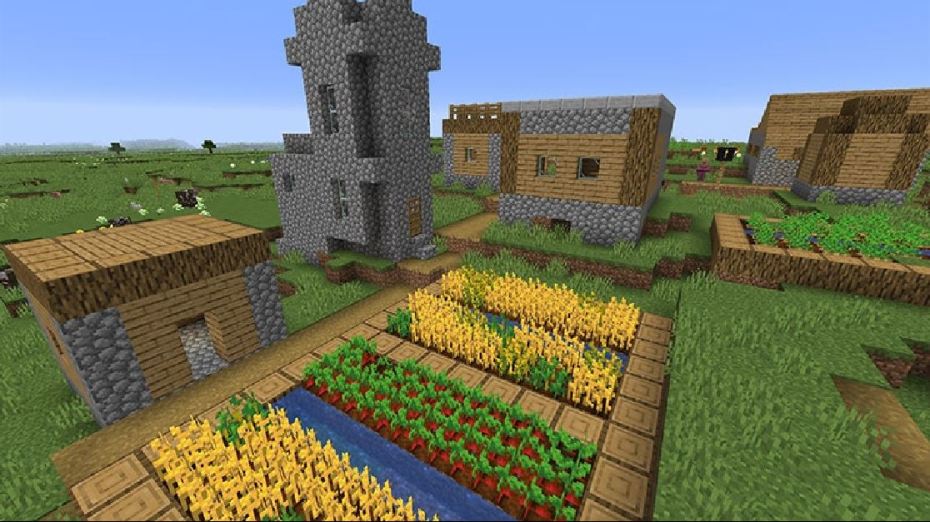
Minecraft still has 91 million monthly players as it hits Game Pass
While everyone can’t stop talking about Apex Legends and Fortnite, Minecraftcontinues to be one of the most played games in the world. Microsoft revealed today that the block-building phenomenon still has more than 91 million monthly active players. For comparison, Epic Games said Fortnite has 78 million monthly active players back in September.
Minecraft has ascended into a gaming institution like Pokémon. And now, Microsoft is adding Minecraft to Xbox Game Pass. For $10 per month, you can get Halo: The Master Chief Collection, Crackdown 3, and — beginning April 4 — Minecraft.
“Since its launch in 2009, the Minecraft community has remained one of the most active and passionate in gaming, attracting over 91 million players [each month] of all ages from virtually every country in the world,” Xbox Game Pass marketing boss Parimal Deshpande said. “Those joining through Xbox Game Pass will enter a vibrant, global community that plays across 20 unique platforms like Windows 10, Nintendo Switch, Xbox One, and mobile.”
More people for Minecraft Marketplace
Minecraft is not free-to-play, but it still seems ubiquitous. But by adding Minecraft to Game Pass, Microsoft could amplify that effect. And it is simultaneously boosting Games while exposing more people to Minecraft’s in-game store.
“Xbox Game Pass players will also gain access to an ever-expanding array of content for purchase via the in-game Minecraft Marketplace,” said Deshpande. “[The Marketplace] contains over 1,000 pieces of content from 60 distinct creators.”
The Minecraft Marketplace is a major focus for Micorosft. It treats it more as an ongoing service. That’s why it’s available everywhere and supports cross-play. And enabling community creators to build and sell content is a part of that. This ensures the game continues to make revenue and players have an abundance of fresh content beyond The Minecraft Team’s frequent updates.
And now Game Pass players can hop into Minecraft without spending any extra money, and they may end up spending cash in the Marketplace instead.
How to build a nice fireplace in Minecraft
It’s been a while since I returned to the blocky, charming world of Minecraft, but this video from 2010 is going viral and satisfies the urge. The fireplace tutorial begins about a minute in.
A brief history of the bizarre, unholy offspring of Tetris
In 1984, Alexey Pajitnov, then working for the Russian Academy of Sciences, completed his masterpiece, Tetris. It was perfection and, sadly, could only go downhill from there, as the inimitable videogamedunkey explains in this delightful video above.

Fly freely around the 3D worlds of your favorite (mostly Nintendo) games
noclip.website hosts the extracted levels of various classic games and a simple interface to fly freely around them.
Remember these?



(That last one is the collision map of a Dark Souls region.)
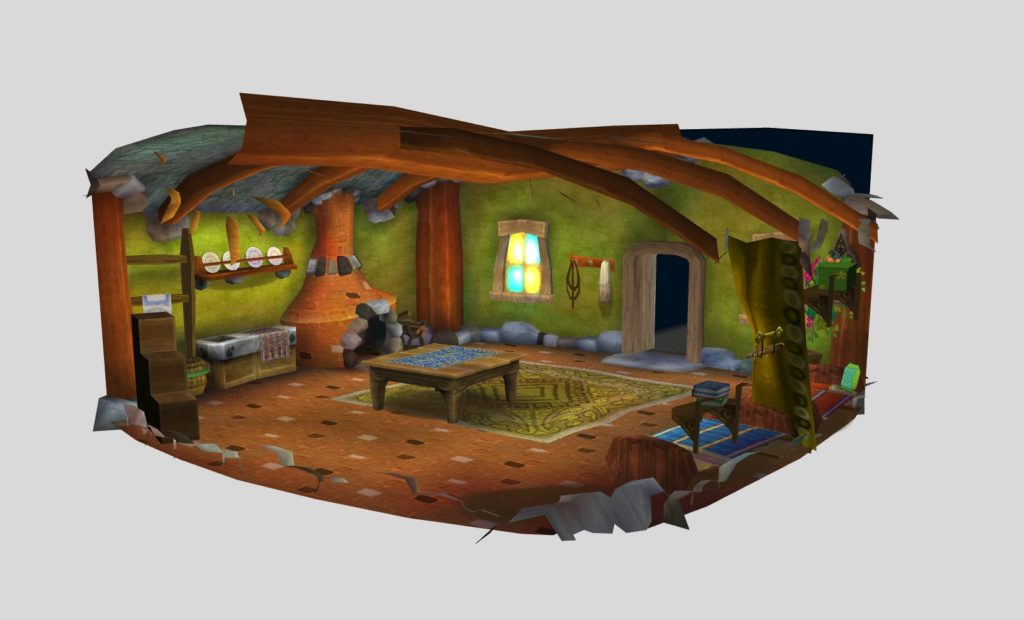
How to build a nice fireplace in Minecraft
It’s been a while since I returned to the blocky, charming world of Minecraft, but this video from 2010 is going viral and satisfies the urge. The fireplace tutorial begins about a minute in.
A happy medium? Why screens are not all bad
Are screens innately bad for children? How much is too much? Is there anything good about children gaming? How do you stop it? Should you? We ask the experts.
Amother of two young children recently confided that she had come to realise “my main task as a parent is controlling the kids’ screen time”. She sighed. “It’s a bigger job than feeding them.”
Fortnite. Minecraft. Peppa Pig. How many bottom lips have bulged, tears been shed and tantrums chucked in clashes over time spent consuming entertainment such as this on digital devices?
Smartphones, tablets and computers shine their sleep-disrupting lights on all sorts of tensions in families today. Meanwhile, parents contend with an endless stream of guilt-inducing headlines – and the odd cafe owner – giving them the bad news on children and digital devices.
“The concept of digital abstinence, the idea that you pack it away and get rid of it, is in fact no longer really relevant or useful for families,” says paediatrician Dr Anthea Rhodes, director of the National Child Health Poll at the Royal Children’s Hospital in Melbourne. “Almost everyone is online and that includes most teenagers and a lot of much younger children – it’s an aspect of how most people live now.”
The stats bear her out. Almost all secondary school children have their own tablet or mobile phone. So do two-thirds of primary school-aged children and a third of preschoolers, according to the hospital’s National Child Health poll. No wonder excessive screen time topped a list of parents’ concerns in an earlier poll by the hospital.
And it’s no wonder some parents have a tricky time navigating this area. As Finnish educator Pasi Sahlberg mused, it’s rare in human history for parents to be grappling with the very issues they are trying to help their children manage.
“It’s almost like the blind trying to lead the blind, in a weird way, trying to see the light,” he says.
So are screens innately bad for children? How much is too much? Is there anything good about children gaming? How do you stop it? Should you?
Here’s what the experts say.
“Fortnite is a genius game,” says child and adolescent psychologist Dr Michael Carr-Gregg, “in that it combines the strategising, the building and the shooting, which are three things that people love to do online.
“Add to that it was free and that it was able to be played on multiple devices and that it has no save points – [and] it actually turned out to be a really, really dangerous thing.
“Number one, it’s not appropriate for children in primary school yet a lot of primary school kids are permitted to play it.”
Fortnite is rated for children 12 or older. (Facebook, Snapchat and Instagram all stipulate that you must be over 13 to join.)
“Second, it has no save points so that when Mum’s asking you to set the table or do your homework, in order for you to walk away you’d have to abandon your friends – and that’s just never going to happen.
I think it really does sow the seeds of some fairly compulsive play.
“The games go for 20 minutes each and so once you’ve started you can’t really stop. So I think it really does sow the seeds of some fairly compulsive play, and I think that can impact on other aspects of their lives – their academic life, their social life and, of course, their family life.”
Yes, the very mention of Fortnite has been eliciting eye rolls in parents and teachers since it was released in 2017 – and rapt enthusiasm among its 200 million registered users.
That its makers have just announced a $140 million prize pool for weekly tournaments won’t hurt the game’s uptake either. Perhaps new rival game Apex Legends will make a dent – it attracted 25 million players in its first week.
But Dr Marcus Carter, from the University of Sydney, views Fortnite through a different prism. Dr Carter, who lectures in digital cultures, has studied the online play of children aged nine to 12.Advertisement
What I like about the complexity of games like Fortnite and Minecraft is that kids really can dive in and develop a deep knowledge.
“What I like about the complexity of games like Fortnite and Minecraft is that kids really can dive in and develop a deep knowledge,” he says. (An educational version of Minecraft is used in many Australian schools.) “These kids are building a curriculum for themselves in problem-solving, which is a more broadly applicable skill.”
Try playing Fortnite with your children, he adds, and “you’ll probably suck”. (This writer can attest to that.) “How many things are there when the kids are better than the parent?”
Dr Carter notes that when Fortnite team members chat during the game, it can be about a range of topics and not just the game itself. “That’s what hanging out with your friends is about,” he says. For children who may struggle socially in school “being an expert in Minecraft is empowering and confidence building”.
Context may well be key. Dr Carr-Gregg says that while some parents regard Minecraft as the “the crack cocaine of the internet”, he has used it therapeutically with a boy who “could express himself through Minecraft much better than anything else”.
And passions wane, as Dr Carter points out. “Fortnite will probably drop off and be replaced by the next thing.” One 13-year-old former Fortnite fan we spoke with concurred. “I’m bored with it. For me it’s dead, and probably for my friends.”Advertisement
As University of Melbourne social researcher Jane Mavoa notes, screen time in itself is not a “monolithic construct” from which you can infer certain outcomes. “The reality is there’s a huge difference between a kid playing [online] with their dad for a bit of one-on-one time, just having fun building and creating, versus, say, watching a TV show.”
Rather than being a gateway to moral ruin, digital activities can nourish children’s play in complex ways, as Ms Mavoa has found in her PhD study of six- to eight-year-olds. Children will play together, adopt characters, invent scenarios and build obstacle courses to navigate within the world of Minecraft; in a playground, they might act out a Minecraft scenario using gumnuts as stand-ins for blocks. “Kids don’t reproduce verbatim what they’ve watched. They take these elements and reshape them and mix them up.”
A passion for Minecraft can propel children who otherwise wouldn’t read into consuming books on the game. They might even get stuck into Minecraft crafting. Parents can facilitate creative crossovers, too. One father we spoke with noticed his two sons viewing Japanese animations online and reading a high turnover of manga comics. The father went online himself and found a Japanese manga artist in Melbourne. She now tutors the boys once a week in (screen-free) drawing techniques and conversational Japanese. “They’re usually very rowdy but during the lessons you can hear a pin drop,” the father says.
But what to do when your child just won’t switch off?
A UK television host last year confessed she smashed her two boys’ tablets on a table leg after they defied her and kept playing Fortnite and PlayerUnknown’s Battlegrounds (PUBG). “We’d made all sorts of rules and all sorts of times – and all of those rules got broken. And, in the end, I said, ‘Right, that’s it!’”
Most parents who’ve had to prise a tablet from a wailing child’s grip, or endure aggressive backchat from an otherwise polite adolescent who has been asked to switch off, will have strategies of their own. They might range from pre-emptive boundaries about when it’s OK to log on – weekends, once homework is done – to putting in place parental controls on what apps can be used and for how long. Then there are other tactics such as limiting video-game chat to friendship groups (and not strangers); or disallowing in-app purchases on family devices (the company behind Fortnite made $3 billion last year, including in-game “micro-transactions” – alarm bells ringing?).
UNICEF’s 2017 Children in a Digital World report cautions parents not to assume that any digital activity is prima facie wrong, and notes that “tension around these restrictions can also damage trust between parents and children”.
I plead with parents on a weekly basis that for every hour of screen time there be at least two hours of green time.
Dr Carr-Gregg, who headed the recent review that led to smartphones being banned in NSW primary schools, has this to say: “Young people aren’t very good at self-regulation and I think one of the things we need to do as parents is remember that we are their frontal cortex. We need to be the fully developed part of their brain that isn’t. We need to set limits and boundaries.
“I plead with parents on a weekly basis that for every hour of screen time there be at least two hours of green time.
“Kids need to be outdoors, they need to oxygenate their brain, they need to exercise. And staring at screens for 13 hours a day is not OK.”
(Thirteen hours a day may well amount to a gaming disorder, which the World Health Organisation has controversially added to its list of diseases.)
If I was in the middle of coffee with friends and someone tipped it out while I was halfway through and said, ‘Now go and set the table’, well, I would probably get pretty agitated.
Professor Susan Edwards, who recently co-wrote a statement of guidance on digital technology for Early Childhood Australia, tries to work with children towards “a happy medium” and says a bit of empathy can go a long way.
“If I was in the middle of having a coffee with my friends and someone came and tipped it out while I was halfway through it and said, ‘Now go and set the table’, well, I would probably get pretty agitated.
“So before they even start, it’s like, ‘OK, you’re going to have 10 minutes of this, or ‘When that episode of Peppa Pig is finished, Mummy’s putting the phone away.’ ”
One mother we spoke with bemoaned the loss of good old-fashioned boredom for children in modern life. Rather than having to entertain themselves, they simply reached for the nearest smartphone.
So when Pasi Sahlberg, who is professor of educational policy and deputy director at the UNSW’s Gonski Institute, says parents and educators need to think much harder about how to entice children away from digital devices, he also concedes that this can be very hard work.
“We’re dealing with an extremely powerful opponent,” he says, “so very few of the conventional, traditional means will be enough.”
Professor Sahlberg, who moved with his young family from Finland to Sydney last year, devises “winning proposals” to get his two boys outdoors and engaged. “Both our boys are extremely interested in Australian birds. I just need to say, ‘Do you want to take the bicycles and go and see cockatoos?’ and they throw everything else away and, ‘Yeah, let’s go!’ ”
He points out that Australian kids copped a D-minus overall in the latest Active Healthy Kids Australia report card, which crunches data from around Australia. One in five Australian children and teens get the recommended 60 minutes of “huff and puff” exercise every day. This, on its own, is a good reason to get kids up and active, he says.
“The older I get, the stronger believer I am in the power of high-quality play for children,” says Professor Sahlberg. “Playgrounds are undervalued places for the little kids nowadays. Australia has beautiful playgrounds. Go there for an hour. But go there without your iPhone.”
So how much is too much?
It’s probably fair to say, as the co-founder of the $35-billion Australian software company Atlassian, Mike Cannon-Brookes, did last week, “If you entertain your kid 24 hours a day with an iPad, they are probably not going to turn out so great.”
Even experts who take the most nuanced views of how kids use screens would agree there has to be an upper limit, according to Professor Anthony Okely, who led the team that developed Australia’s screen-time guidelines. He says some parents believe that four or five hours of screen time per day for a four-year-old is perfectly fine.
The guidelines he developed are part of broader advice focused on limiting sedentary activities and encouraging children’s movement – and they’re based mostly on evidence about passive screen-based activities such as television viewing rather than, say, playing on a Wii. Professor Okely says he has taken a cautious approach – in the absence of sufficient evidence that new technologies cause no harm and, in fact, do good.
So in Australia, it’s recommended that children younger than two have no daily screen time; two to five-year-olds have no more than an hour; and five to 17-year-olds have no more than two hours of recreational screen time. (Four in five Australian children and teens exceed these recommended limits daily, according to the latest Active Healthy Kids Australia report.)
“Where it gets a bit grey is where we have more interactive screen-based technologies,” says Professor Okely, who is director of research at Early Start at the University of Wollongong. “Then the key question becomes: are the relationships with health the same as with passive technologies, or are they different? That’s where the point of contention is.”
The American Academy of Paediatrics (AAP) has similar guidelines to Australia with some distinctions: it says video chatting is OK for children under 18 months, for example, because “back-and-forth conversation” improves language skills “much more than one-way interaction with a screen”. (In its tips for parents, the AAP also notes that it’s OK for teens to be online – “online relationships are part of typical adolescent development” – but they need to understand the importance of privacy and the dangers of predators.)
Professor Okely is disappointed that the UK’s Royal College of Paediatrics and Child Health does not offer screen-time limits because the evidence of harm from screens is “too weak” and “often overstated”. Instead, the College suggests families ask four questions:
- Is screen time in your household controlled?
- Does screen use interfere with what your family want to do?
- Does screen use interfere with sleep?
- Are you able to control snacking during screen time?
If parents can answer “in a way that satisfies them”, says the College, then they are doing well managing “a tricky issue”.
One thing that’s not contested – phew – is that the light from screens can prevent sleep onset in children and adults. Almost half of Australian children use a screen at bedtime, the Royal Children’s Hospital poll found in 2017. Infant TV viewing has been linked to shorter sleep duration (which has been linked to weight gain). Even the UK’s Royal College of Paediatrics prescribed a limit for this: switch off screens an hour before bedtime.
You’ve got a choice about how you think about tech. You’re not powerless against it.
Other things are not in dispute either. For very young children to develop visual depth perception, for example, they need to look at real three-dimensional objects and not just those on a two-dimensional screen. To develop fine motor skills, they need to manipulate three-dimensional objects through a range of activities (drawing, painting, modelling with clay) rather than just swiping and pinching at tablets.
Details such as this, along with the science on screens’ effects on eyesight and posture, are set out in Early Childhood Australia’s recent statement of guidance on digital technology. With a focus on lived experience, it acknowledges that screens can be useful as a handy distraction to help calm young children – say, in a waiting room – but they shouldn’t, for example, be used to distract children from their own feelings.
But the biggest takeout for parents, says co-author Professor Edwards – a former kindergarten teacher and now professor in early childhood education at the Australian Catholic University – is that there is more than one way to view technology and its place in your family’s life.
“You’ve got a choice about how you think about tech,” she says. “You’re not powerless against it.”
She suggests asking what you value as a family and then assessing how your family’s digital use supports that, or doesn’t. For example, playing games such as Minecraft can offer a way for children to stay in touch with friends who don’t live nearby.
What would Finland do?
The Nordic paragon of child education is also the home of phone pioneer Nokia – and it’s as divided as anywhere on whether to double down on technology or steer kids away from it, says Professor Sahlberg, a former director-general of Finland’s Ministry of Education.
He believes it’s critical for children to learn to self-regulate and that it’s non-digital activities that help fortify them against the infinite allure of the online world. Professor Sahlberg suggests parents make it a habit for kids to regularly choose and read paper books; and to handwrite letters once a week to, say, a grandparent. “Writing letters by hand is a great way to help young children concentrate.” And learning how to have respectful, face-to-face conversations takes practice.
If we know anything from the social research about what helps people during the course of their lives it is self-control.
“I think these are all habits that are at the heart of human existence and that help you to develop your self-control, calming down and thinking about what you can do.
“If we know anything from the social research about what helps people during the course of their lives it is self-control.”
(Conscientiousness, self-discipline and perseverance in children under 10 have been found to be the key indicators of health, wealth and non-criminality in adulthood, in a New Zealand study that has followed the lives of 1037 babies born in 1972 and 1973 in Dunedin. )
Professor Sahlberg, who started out teaching maths and science, believes that using digital devices can undermine children’s ability to self-regulate – “to sit down and think”.
“If you don’t know how to calm down and concentrate and focus, it’s actually a recipe for failure in maths and science.
“If you need my expert opinion on why NAPLAN results in Australia haven’t improved and why PISA results [the OECD’s international education tests] are declining in Finland, a big part of the reason is that kids don’t have this kind of patience any more to sit down and think about a problem.”
Put away your own device. Just be an example for your children. It’s gonna be hard for a parent. Put it away. Shut it down.
(The links between fine motor skills – which children develop by doing a range of activities with their hands and fingers – and later academic success, including in maths and reading, are still being unpacked by scientists.)
So what does Professor Sahlberg say to fretful parents who want to limit their children’s use?
“Look at yourself first. Put away your own device. Just be an example for your children. It’s gonna be hard for a parent. Put it away. Shut it down.”
Children don’t just model behaviour on parents and older siblings but on family attitudes to aspects of life such as technology. Professor Sahlberg says digital devices should be understood by children to be tools “to live a healthier and safer life and do good things” – and not a treat.
“Young kids think these hand-held devices are entertainment, a treat – ‘If I’m nice, I’m going to get Daddy’s iPhone’. That’s something I find problematic because it creates behaviour and thinking that may end up being difficult.”
To keep some kind of balance for children, Professor Sahlberg is convinced that “play and spending more time with your children is the key”.
“If we can do this in Finland – go and play with our kids and use the cold and frozen nature to do that – you should be able to do that many times better in Australia.
“This is a perfect setting for raising children without technology,” he says, “because the beauty is just unbelievable.”

